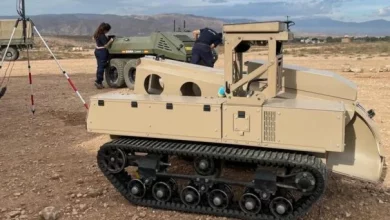Russia Expands Nuclear Drills to Areas Bordering NATO States

Russia has expanded its ongoing tactical nuclear weapons drills near Ukraine to include a military district that borders NATO member states.
The country’s defense ministry said soldiers and sailors from the northern Leningrad military district had rehearsed the deployment of tactical nuclear weapons as part of the exercises.
Leningrad district borders NATO members Lithuania, Norway, Poland, Finland, Latvia, and Estonia.
The move is seen as an apparent attempt by Moscow to broaden the disclosed geography of its nuclear drills, from the southern military district bordering Ukraine to areas covering all of Russia’s European border.
A Response to the West?
According to the ministry, the drills include obtaining special training ammunition for the Iskander-M tactical missile system and fitting them into launch vehicles.
Troops also practice covert movement into a designated position for launching nuclear-capable missiles.
“The crews of navy ships involved in the training will equip sea-based cruise missiles with special mock warheads and enter designated patrol areas,” it said.
But the decision to cover areas bordering NATO states comes as some of the alliance’s members have permitted Ukraine to use their donated weapons for strikes inside Russia.
Russian President Vladimir Putin has already warned against the West’s participation in the war, saying Moscow could provide long-range weapons to other nations to strike Western targets.
He also re-issued his country’s readiness to use nuclear weapons if its sovereignty is threatened.





